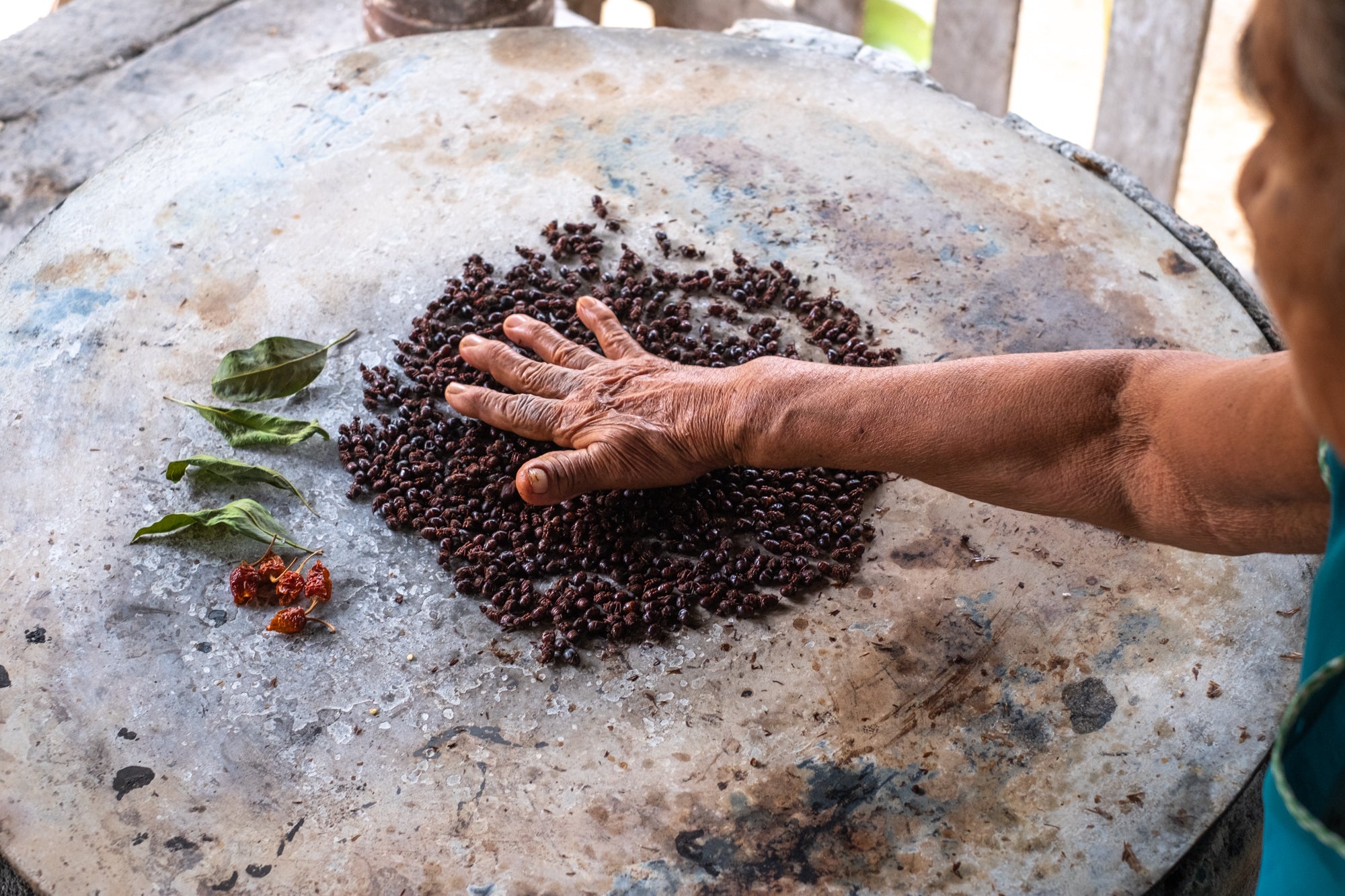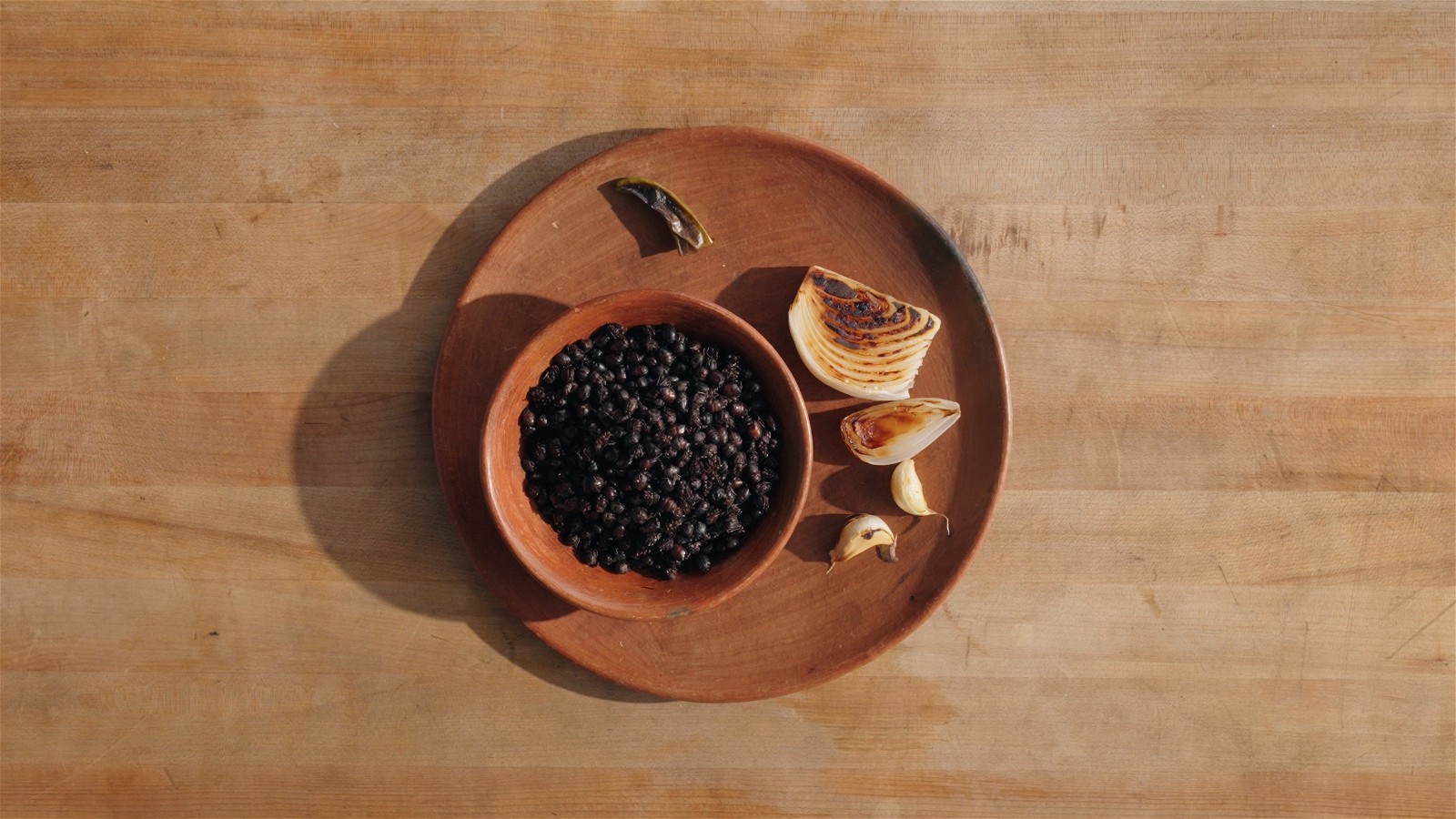Chicatanas: A fleeting delicacy of Ants
Chicatanas: A fleeting delicacy of Ants

June 7, 2021
Chicatana ants are one of the more obscure delicacies in Mexican cuisine, yet their unique flavor and texture are fundamental to regional salsas and moles commonly eaten throughout Oaxaca's diverse coastal areas, central valleys and mountains. They’re known to impart a crunchy, earthy, smoky flavor to whatever dish they’re added to, whether that’s making salsa or just sprinkling them on top of a dish for an added crunch and complexity (we love them sprinkled on half an avocado for an afternoon snack).
While grasshoppers, or chapulines, have really jumped in popularity over the past few years here in the US, they’ve long been a staple in Mexico, served toasted with chile and lime as a snack or to add a crunch on top of a dish, just like chicatanas. Perhaps eating insects hasn’t been the norm in the US in the mainstream culinary scene in the past (we could go on a long tangent here but we’ll save that for another day), but it’s a deep tradition in Mexico, and for delicious reasons.
As Mexico's fifth-largest state, Oaxaca is made up of seven different regions, each with its own culinary ecosystems; and chicatanas are an equally appreciated delicacy in each of them. In other words, the rareness of chicatanas is due to their extremely limited availability, not their limited desirability.
These beautiful, big ants are harvested immediately following the first rains of the late spring/early summer season. The 'harvest' generally happens during an (increasingly) narrow time of year after the torrential rains have soaked the ground and left puddles in their wake.
The chicatanas flee their flooded nest (el Arrieral) in search of food and new shelter, and are then collected by hand in the middle of the night (usually between 3am - 5am). One by one, the chicatanas are picked up off the ground and placed into buckets, with the harvesters trying to work as fast as possible while also trying to avoid their painful bites. Some people even go so far as to stand in buckets of water to ensure none of the ants can crawl up their legs - talk about dedication and tactful skill!
While we've seen some folks say they harvest chicatanas while they are flying away from their nests, scooping them out of the air with plastic bags, our farmer partners have confirmed that the method they use, and are familiar with, is hand collection straight from the earth outside of the Arrieral (chicatana nest).
Once collected, the chicatanas are toasted on a hot comal and tossed with salt and sometimes additional spices. The cooking process removes their wings, and preserves the chicatanas for dry storage throughout the upcoming season, ensuring their quality stays intact.
The reward is worth the painstaking work, and it's an accomplishment often celebrated with the shared enjoyment of one of the region's popular chicatana-based dishes like salsa and mole. Typically, families who harvest chicatanas save a portion of their (toasted) harvest for consumption over the remainder of the year, and sell the remaining surplus chicatanas at the local market (or to local purveyors like Masienda!). While chicatanas might have once been more of an in-home mainstay, their recent crossover into high-end restaurant kitchens around the world, coupled with their fleeting availability means that chicatanas are increasingly valuable across the region's food markets as well.
In their most traditional preparation, chicatanas are lightly toasted on a comal, mixed with spices and seasoned with salt, then blended using a molcajete (a traditional Mexican mortar and pestle made from volcanic rock) to create an aromatic, rustic salsa.
What are chicatana ants?
Chicatana ants, or hormigas chicatanas, are a species of flying leaf-cutter ant: they're much larger than your typical picnic ant, dark brown or red in color as opposed to black, much richer in flavor and far, far more challenging to source. Local communities in Oaxaca, Chiapas, and Guerrero have been collecting and consuming chicatanas since the pre-Hispanic era. They're a rare delicacy: because they only leave their nests once or twice a year, they must be collected by hand at night, and they are aggressive and hard to catch. Once caught, the ants are then placed in water and toasted on a hot comal to naturally remove the wings and legs. The heat of the comal preserves the ants for longer-term use. Because they're so elusive, they garner a high price and are an important part of the local economy.
What do chicatana ants taste like?
Their flavor is unparalleled: pleasantly fatty and smoky, with notes of smoked cacao, nut brittle and a heavy dose of umami, like a bold, washed-rind cheese, and a crunchy texture.
How should you eat chicatana ants?
You can use them as a garnish on guacamole, a filling for tamales, or mixed with peanuts for a salty bar snack accompaniment to mezcal, but perhaps the most delicious application is blending them into a savory salsa. Chefs at upscale restaurants have recently begun showing their love for the flying insects, blending them into moles or other sauces (in one of the best-known dishes at famed Mexico City restaurant Pujol, chef Enrique Olvera grinds them into a powder for the chile mayonnaise he uses as a dip for baby heritage corn).
What are the health benefits of chicatana ants?
Like most edible insects, chicatanas are a wonderful source of sustainable protein, and provide the essential amino acids needed to repair muscles. They also contain vitamins C, E and K and minerals like calcium, phosphorus, potassium and iron, as well as nutrients like zinc, manganese and copper.





All Comments
Gracias por tener este parte de la cultura Mexicana.
I have eaten rye sourdough and butter with chicatana ants at Rosetta and fell in love. What a dish. I did not find the ants crunchy but the chocolate taste (and a little coffee) were splendid. A great discovery.